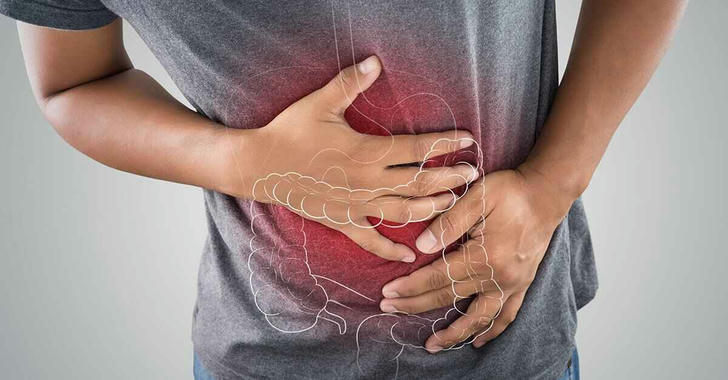Exploring the Therapies and Pain Relief Options for Managing Crohn's Disease
Crohn's disease symptoms, treatment options, pain relief and long term management.
Living with Crohn’s disease often means dealing with unpredictable flare-ups, chronic pain, and lifestyle disruption. As science advances, new therapies—including targeted biological treatments—are transforming how this condition is managed. This article explores current strategies, promising treatment innovations, and ways to relieve pain while improving daily quality of life.

Understanding Crohn's Disease: Causes, Pathophysiology, and Pain Areas
Crohn's disease is a chronic inflammatory condition that affects the gastrointestinal tract, most commonly the small intestine and colon. It belongs to a group of conditions known as inflammatory bowel disease (IBD). The exact cause is unknown, but it is believed to result from a combination of genetic, immune, and environmental factors.
The pathophysiology involves an overactive immune response that mistakenly attacks the gastrointestinal lining, leading to inflammation, ulcers, and damage. This process can affect any part of the digestive tract from the mouth to the anus, often resulting in pain and digestive issues.
Common pain areas include the lower right abdomen, which may be associated with inflammation of the terminal ileum, joint pain due to systemic inflammation, and discomfort around the anus if fistulas or abscesses develop.
Exploring Diseases Similar to Crohn’s: Differential Diagnosis
Early symptoms of Crohn’s disease can vary depending on which part of the digestive tract is affected. Common early signs include:
Persistent diarrhea
Abdominal pain or cramping, often in the lower right quadrant
Fatigue or low energy levels
Unexplained weight loss
Low-grade fever
Blood in the stool
Reduced appetite or nausea
These symptoms may develop gradually and can be mistaken for other gastrointestinal conditions in the early stages, making accurate diagnosis important. Similar diseases include:
Ulcerative colitis: Also an IBD but limited to the colon and rectum.
Irritable bowel syndrome (IBS): Involves digestive symptoms without inflammation.
Celiac disease: An autoimmune disorder triggered by gluten.
Microscopic colitis and intestinal infections: Can mimic Crohn’s symptoms.
Differentiating these requires a combination of lab tests, imaging, and biopsies.
Treatment Progression Based on Disease Stage
Crohn’s disease treatment typically progresses through a stepped approach based on symptom severity, complications, and disease progression.
1. Mild Disease:
Aminosalicylates (e.g., mesalamine): Reduce inflammation in the intestinal lining.
Dietary adjustments: Eliminating trigger foods and optimizing nutrition.
Lifestyle changes: Stress reduction, hydration, and physical activity.
2. Moderate Disease:
Corticosteroids: Short-term use to control inflammation during flare-ups.
Immunomodulators: Medications like azathioprine or methotrexate to dampen the immune response.
Nutritional therapy: Specialized diets such as exclusive enteral nutrition.
3. Severe or Complicated Disease:
Biologic therapies: Target specific inflammatory pathways (see next section).
Combination therapy: Immunomodulators combined with biologics for better response.
Surgical intervention: For strictures, fistulas, or abscesses not responding to medications.
Close monitoring and timely adjustments help avoid unnecessary progression and complications.
Anti-Inflammatory Approaches in Crohn’s Disease Management
Controlling inflammation is a primary goal in Crohn’s disease management. Besides corticosteroids and aminosalicylates, other strategies include:
Budesonide: A corticosteroid with fewer systemic effects, used for targeted treatment.
Anti-inflammatory diets: Limiting processed foods, fats, and dairy products.
Regular assessment by healthcare professionals ensures that treatment is adjusted as needed based on symptom control and lab results.
Biological Therapy and Advanced Treatments for Crohn’s Disease
Biological therapies are a significant advancement in treating moderate to severe Crohn’s disease. These drugs target specific pathways in the immune system:
TNF inhibitors: Infliximab and adalimumab block tumor necrosis factor, a substance involved in inflammation.
Integrin blockers: Vedolizumab helps reduce gut-specific inflammation.
Interleukin inhibitors: Ustekinumab targets different immune pathways.
According to clinical studies:
Around 50–60% of patients receiving TNF inhibitors achieve clinical remission within the first year.
Vedolizumab shows a response rate of 30–40% in patients not responding to other biologics.
Ustekinumab maintains remission in about 45% of patients one year after treatment.
Recent clinical trials have also investigated new molecules with targeted mechanisms to reduce inflammation more precisely, offering additional options when standard treatments are not effective.
Managing Crohn’s Disease Long-Term: Strategies and Patient Support
Long-term management focuses on maintaining remission, preventing flare-ups, and addressing overall well-being. Strategies include:
Lifestyle changes: Smoking cessation, stress management, and physical activity.
Nutritional support: Consulting dietitians for balanced meals and nutrient supplementation.
Regular follow-ups: Monitoring disease activity through blood tests, imaging, and colonoscopy.
Psychological support: Mental health care to help manage chronic illness stress.
An individualized care plan is essential to balance medication, lifestyle, and emotional well-being.
Pain Relief Options for Crohn’s Disease Patients
Pain management is an important aspect of Crohn’s disease treatment. Options vary depending on the source and severity of pain:
Mild pain: Acetaminophen is preferred over NSAIDs to avoid gastrointestinal irritation.
Antispasmodics: Help relieve cramping and abdominal discomfort.
Local treatments: Warm compresses or sitz baths can relieve perianal pain.
Non-pharmacological strategies can play an important role in pain management for Crohn’s disease. These may include:
Mind-body techniques: Mindfulness meditation, relaxation breathing, and guided imagery may help reduce pain intensity.
Acupuncture: Some individuals report symptom relief and reduced abdominal pain with regular acupuncture sessions.
Physical activity: Low-impact exercises like yoga or walking can help reduce inflammation and improve overall well-being.
Heat therapy: Applying a heating pad or warm compress to the abdomen may temporarily ease cramping and discomfort.
Diet modification: Identifying food triggers and following a well-tolerated eating plan can prevent symptom flare-ups that lead to pain.
Sleep hygiene: Maintaining consistent sleep patterns may contribute to better immune regulation and pain threshold.
Incorporating these approaches alongside medical therapy can help create a more holistic pain management plan.
Personalized Therapy and Future Directions
Crohn’s disease is complex and requires a personalized approach to treatment.
The development of biological and targeted therapies has improved symptom control and quality of life for many patients. Ongoing research continues to explore more effective and better-tolerated treatments.
